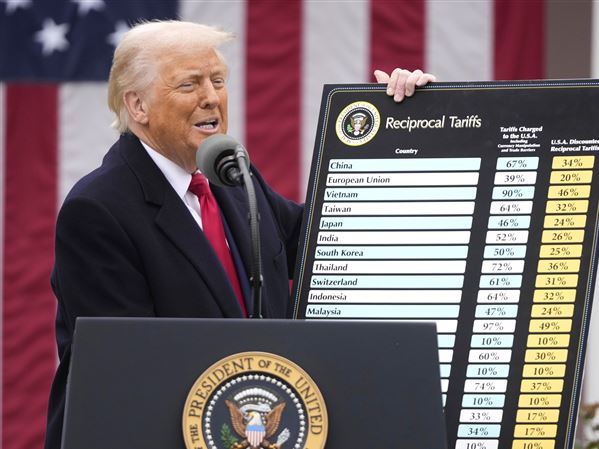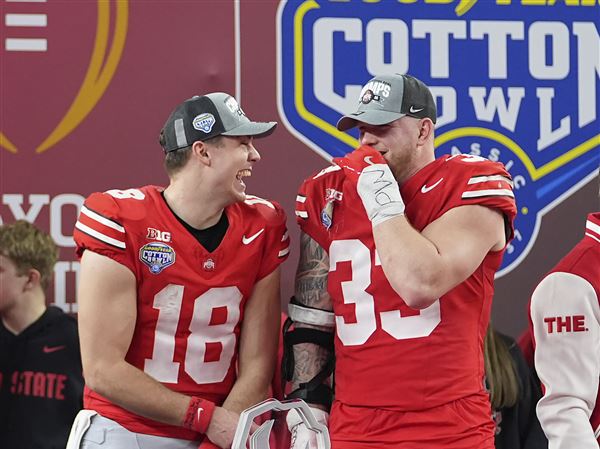
Gene J. Puskar, Associated Press
Even in the make-believe world of professional wrestling, grudges can be real and raw.
So it is with Pittsburgh strongman Bruno Sammartino and the wrestling company he helped turn into a giant of the business world.
Sammartino refuses induction to World Wrestling Entertainment's hall of fame for a simple reason: He says wrestling's profane performers and sexually explicit shows are bad for kids.
"I've completely divorced myself from the wrestling world. I don't believe in it," said Sammartino, who reigned as champion of the WWE's predecessor company for 11 years during the 1960s and '70s.
The WWE will tout its new class of six hall of famers during a pay-per-view show tonight at Mellon Arena. The company stands ready to add Sammartino to the hall any time he allows it.
"He has a standing invitation," said WWE spokesman Gary Davis. "Bruno is one of the giants of our industry, and we would love to induct him when he's ready."
Sammartino said that day will never come.
"I would wonder where my principles are if I accepted," said Sammartino, who is 69 and has been retired from wrestling for 17 years. "Anyway, their hall of fame is a joke."
The 40 members of the WWE Hall of Fame range from ring icon Hulk Hogan to Pete Rose, the baseball legend whose career was ruined by a gambling addiction. Rose is barred from the baseball hall of fame in Cooperstown, N.Y., but he made the WWE's hall as a gimmick after appearing on a handful of wrestling shows.
Having Rose in the WWE's hall of fame and Sammartino snubbing it is an embarrassment to wrestlers, even those comfortable with the theater of the WWE.
"If anyone should be in the hall of fame, even before Hulk Hogan, it is Bruno," said Superstar Billy Graham, who was wrestling's premier villain during the 1970s.
Graham, whose real name is Wayne Coleman, said he tried weeks ago to persuade Sammartino to relent and enter the WWE's hall.
"All the fans want him in, but the hall of fame doesn't mean anything to him," Graham said.
Graham admits his chiseled physique was built with the help of anabolic steroids in the years before they became prevalent. Even so, Sammartino did more for Graham's career than the chemicals.
The late Vince McMahon Sr., who presided over East Coast wrestling, decided Graham would defeat Sammartino for the World Wide Wrestling Federation championship on April 30, 1977, in Baltimore. Graham said the victory over Sammartino was his finest moment, even though the fix was in.
"I felt honored that Bruno passed the torch to me," he said.
By then, Sammartino had had two long runs as WWWF champion, during which he headlined more than 200 shows at Madison Square Garden in New York.
His first title reign began May 17, 1963, when he defeated Buddy Rogers in 47 seconds. Sammartino kept the championship until Jan. 18, 1971. Ivan Koloff pinned him that night in what was called an upset, but actually was a planned marketing strategy by McMahon to give fans new champions, at least for a while.
Sammartino took over again as champion on Dec. 10, 1973, defeating Stan Stasiak. McMahon kept him on top for another three years before installing Graham as champion.
In those times, Sammartino said, pro wrestling was clean enough for children to watch.
"You never heard vulgar language from wrestlers then," he said.
Sammartino stopped watching wrestling after seeing Stone Cold Steve Austin on television one night years ago. Austin stood in the ring, chugging a can of beer and cursing like a cowboy stuck to a cactus.
Such behavior soured Sammartino on the business that made him millions. So did general drug use by professional wrestlers.
More than 70 younger wrestlers have died in the past 20 years, any number of whom were hooked on cocaine, painkillers or steroids.
"I hear [U.S. Sen. John] McCain call for hearings about steroid use in baseball," Sammartino said. "But if people are seriously concerned about these kinds of problems, why don't they care about wrestlers?"
Sammartino's disdain for modern wrestling extends beyond the WWE. The Professional Wrestling Hall of Fame and Museum in Schenectady, N.Y., an operation separate from the WWE, inducted Sammartino in 2002. But he boycotted the ceremony, saying he wanted nothing to do with that organization, either.
Can a wrestling hall of fame have legitimacy without Sammartino's endorsement?
"An emphatic 'no,' " said Butcher Vachon, a wrestler for 30 years.
Try as he might, Sammartino cannot forget about life in the ring. The outcomes of his matches were predetermined, but the pain was real and severe.
His neck was broken in a 1976 match against Stan Hansen. Sammartino has undergone various back surgeries, and he was fitted with an artificial right hip.
No longer can Sammartino run for exercise, but he walks six or seven miles a day. He weighs 220 pounds, or about 50 less than he did while wrestling.
Even without Sammartino, the WWE's hall of fame includes any number of outspoken performers, including Graham and former Minnesota Gov. Jesse Ventura.
In the 1980s, Ventura tried to unionize wrestlers in what is now the WWE. His stand rankled ownership, but all seems to have been forgiven. Ventura participated in a wrestling show for the company while he was governor.
"That's the sad thing about wrestling." Sammartino said. "People will speak out on bad things in the organization, but for a payday, they will forget about those things."
First Published: February 20, 2005, 5:00 a.m.

















